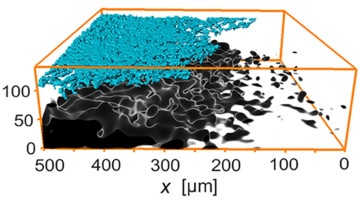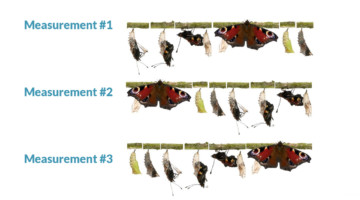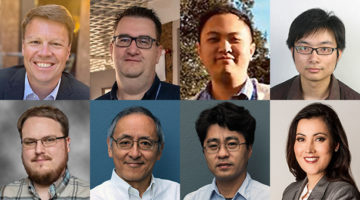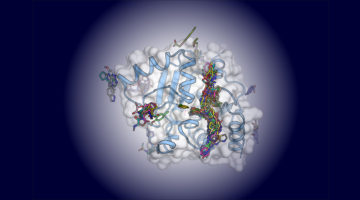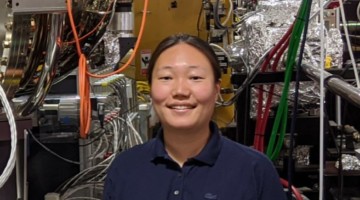Last week the ALS returned to user operations after its summer shutdown. A lot of work was accomplished, including several large projects in the storage ring and maintenance and updates for the accelerator and beamlines. Read more »
3D View Reveals Shadow Effect after Rapid Battery Charging
Using 3D x-ray microtomography, researchers measured the lithiation levels of particles in Li-ion battery electrodes during charging. At faster charging rates, lithium metal accumulated on the electrode surface and created a “shadow effect,” a region of poor lithiation in the electrode at some distance away from the lithium plating. Read more »
When Timing Isn’t Everything: Spontaneous Chemical Dynamics
Researchers combined aspects of x-ray photoelectron spectroscopy (XPS) with correlation spectroscopy—a statistical method capable of detecting patterns in microscopic fluctuations across space and time. The new technique, called time-correlation XPS, allows researchers to monitor dynamics without the need for a timed trigger. Read more »
U.S. Energy Secretary Granholm Visits Berkeley Lab
In a visit to Berkeley Lab on August 20, Secretary Granholm and Congresswoman Barbara Lee met doctoral fellow Mikayla Barry at ALS Beamline 9.3.1. They also heard about extreme ultraviolet lithography and how protein crystallography enabled critical COVID research and Jennifer Doudna’s work on CRISPR. Read more »
Machine-Learning Team Receives 2021 Halbach Award
This year’s Halbach Award for Innovative Instrumentation at the ALS went to a team of accelerator physicists and computer scientists who were able to use machine-learning techniques to solve a problem that has plagued third-generation light sources for a long time: fluctuations in beam size due to the motion of insertion devices. Read more »
2021 Renner Award winner Andrea “Andi” Jones
At this year’s ALS User Meeting, Andrea “Andi” Jones, proposal coordinator in the User Services Office, was honored with the 2021 Tim Renner User Services Award. The ALS Users’ Executive Committee selected Jones for “her dedication and commitment in supporting the User Office that have allowed efficient proposal reviews and beamtime allocations during the pandemic.” Read more »
Sifting through Fragments for COVID-19 Treatments
COVID-19 vaccines are essential for preventing serious disease, but the identification of new drugs is still necessary for the treatment of patients who become sick as a result of SARS-CoV-2 infection. Here, scientists used computational docking and crystallography to screen large numbers of small molecules for potential use in drug compounds. Read more »
September 1 Proposal Deadline and COVID updates
The ALS is committed to supporting the science of our users, and we’re looking forward to welcoming back more on-site users this fall while continuing to support remote experiments. Please review the requirements for access to the ALS and remember to submit your proposals for the next cycle by 11:59 p.m. Pacific on September 1. Read more »
Na Hyun Jo, Materials Sciences Postdoc
Na Hyun Jo has only been at Berkeley Lab for five months, but she’s already helping to organize the Energy Sciences Area Science Hour. Find out more about her research and what inspired her to become a scientist. Read more »
A Multiscale Picture of Oxygen Loss in Battery Electrodes
In lithium-ion batteries, oxygen atoms leak out of electrode particles as the lithium moves back and forth between electrodes. Now, researchers have measured this process at multiple length scales, showing how the oxygen loss changes the electrode’s structure and chemistry, gradually reducing the amount of energy it can store. Read more »
- « Previous Page
- 1
- …
- 15
- 16
- 17
- 18
- 19
- …
- 28
- Next Page »

